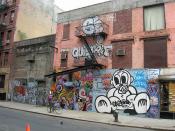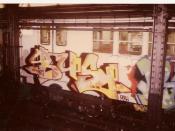Assignment 2 Tim Creswell illustrates many different contexts of "place" in pages thirty-one through fifty of In Place/Out of Place. Like any other word, the word "place" can be used in many different ways. It can be used to describe a location, town, proper or designated role, a suitable setting or occasion, a particular situation or circumstance, a high rank or status, and the list goes on.
Whether or not something is "in place" or "out of place" will always depend on the point of view of the person looking at it. People are all brought up differently and taught different things. Therefore while one thing may be "in place" to one person, the same thing may be "out of place" to another person. Along with the idea of how a person views a certain thing to determine whether or not it belongs or not, having a position of power can determine for others what is "in place."
Having that authority, one can tell other people whether or not something is "in place." Since that person has authority over others, what they say must be right. Several graffiti artists out of the SoHo district were becoming famous for their work. Keith Haring's work, for example, "soon"æwas inside the galleries rather than outside" (Creswell 36). People were responding to graffiti in a positive way. Keith Haring's artwork was in art galleries and even on posters. Famous people wanted to be associated with this new trend. "Lou Reed wanted to be pictured spraying graffiti in the New York subway for an album cover" (Creswell 37). However that did not happen all because of the authority of the Stebbins 2 New York City government. They had convinced Lou Reed's record company to change the cover.
Creswell points out in his work that...


